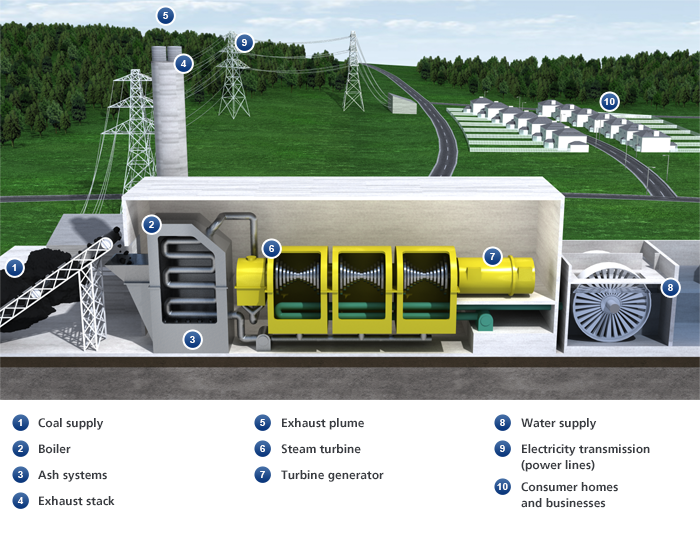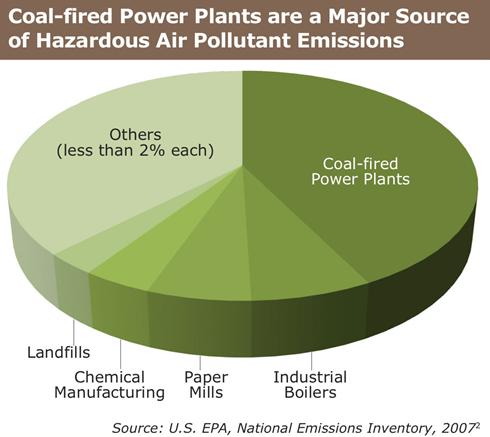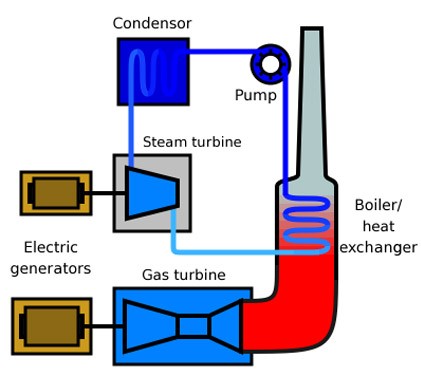Electricity can be generated in many ways. During this blog I will focus on three methods. They include coal fired power plants, natural gas power plants and nuclear power plants. Although they all produce electricity, each one has its own unique process.
The first step in producing electricity from coal requires the coal to be broken up into powder. This makes the coal more easy to burn and use as fuel. After it is made into powder it is blown into the boiler where it is then converted from chemical energy into heat energy. Eventually the steam from the coal heats up a turbine which turns the heat energy into mechanical energy. After that it is turned into electrical energy by a transformer in which the national grid uses to connect to people and businesses all over. Coal fired plants are one of the easier methods of producing energy, however they have some harmful effects on the environment.
http://www.worldcoal.org/coal/uses-of-coal/coal-electricity/
https://www.edfenergy.com/energyfuture/coal-generation
Natural gas power plants.
Natural gas is a fossil fuel that forms underground over thousands of years. Each country has a limited supply. According to the U.S Department of Energy, Energy Information Administration, Annual Energy Outlook 2005. “In 2003, natural gas reserves in the United States were estimated to be 1,338 trillion cubic feet, and U.S. gas production was 18.6 trillion cubic feet”. The natural gas can be combusted to form electricity. The natural gas power production process begins with the extraction of natural gas from the ground, then it is transferred to the power plants in which boilers convert it to generate electricity. Burning natural gas to produce power does harm the air quality, however its impact is less sever than burning coal or oil. Burning natural gas produces high numbers of methane and nitrogen oxides. According to U.S. EPA, eGRID 2000, “The average emissions rates in the United States from natural gas-fired generation are: 1135 lbs/MWh of carbon dioxide, 0.1 lbs/MWh of sulfur dioxide, and 1.7 lbs/MWh of nitrogen oxides”.
A basic setup of a natural gas power plant.
http://www.epa.gov/cleanenergy/energy-and-you/affect/natural-gas.html#footnotes
Nuclear Power Plants
A third method of generating electricity included nuclear power plants. Nuclear power plants are similar to other electrical generating facilities. However the method of obtaining that energy can be a title bit more complex. A nuclear reactor produces energy by splitting uranium atoms. This process is called fission. When the uranium particles split they absorb subatomic particles called neutrons. This process releases energy. This reaction heats water which in turn produces steam to activate the generators to produce electricity.
http://www.cpsenergy.com/Services/Generate_Deliver_Energy/Nuclear/nuke_generation.asp
http://www.world-nuclear.org/Nuclear-Basics/How-does-a-nuclear-reactor-make-electricity-/



This blog was extremely informative about the 3 ways of producing electricity. I liked the way that you broke down the 3 methods, and organized them into 3 different desctions of your blog, this made it much easier to read and follow. Good inclusion of a video too! I’ve yet to see someone put one in so that was innovative and I’ll look to do the same in the future! Good work
Nice blog on the different ways of generating electricity. I liked the video as well the different pictures used to better show the processes. Its amazing how coal is responsible for almost half of the sources of hazardous air pollutant emissions.